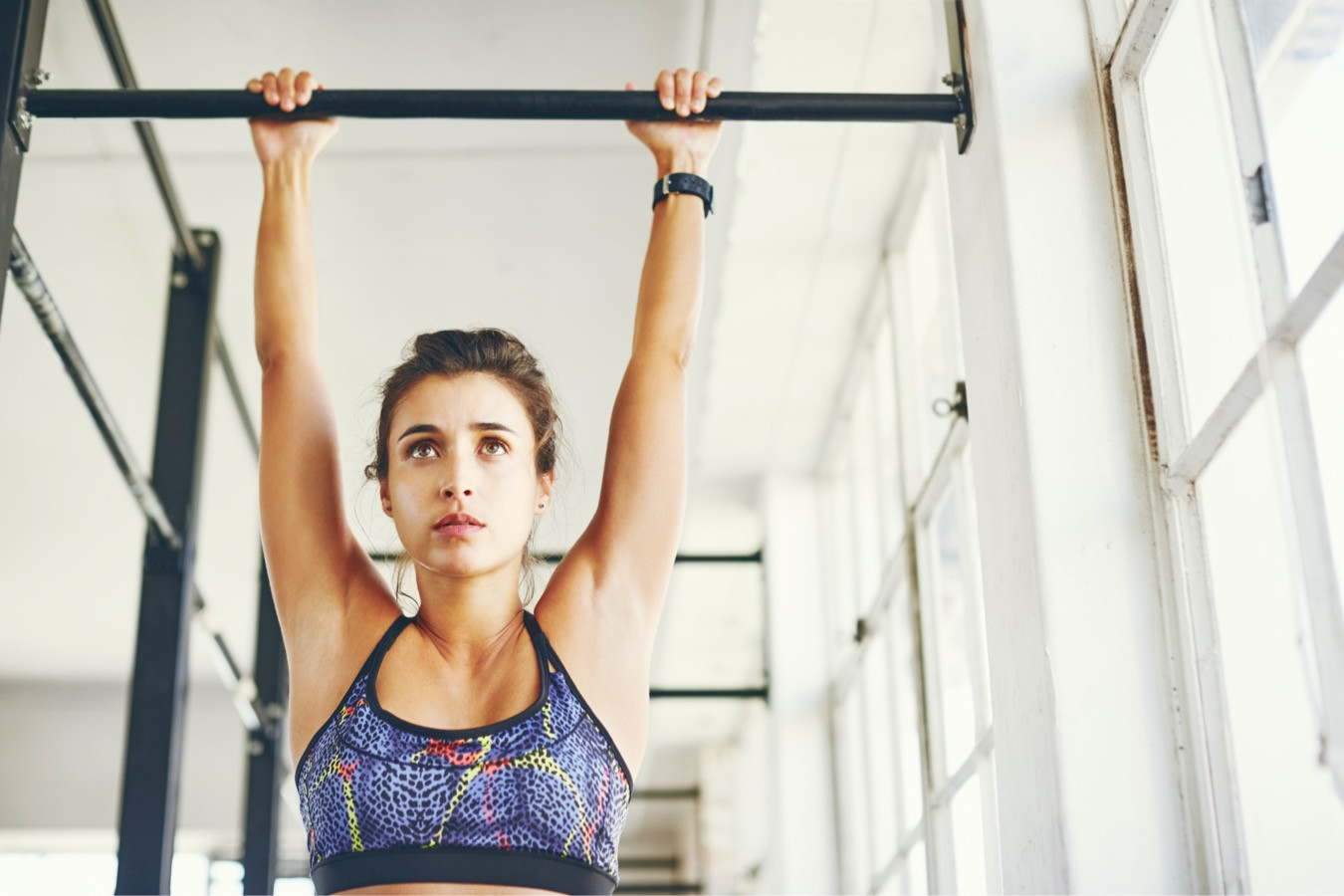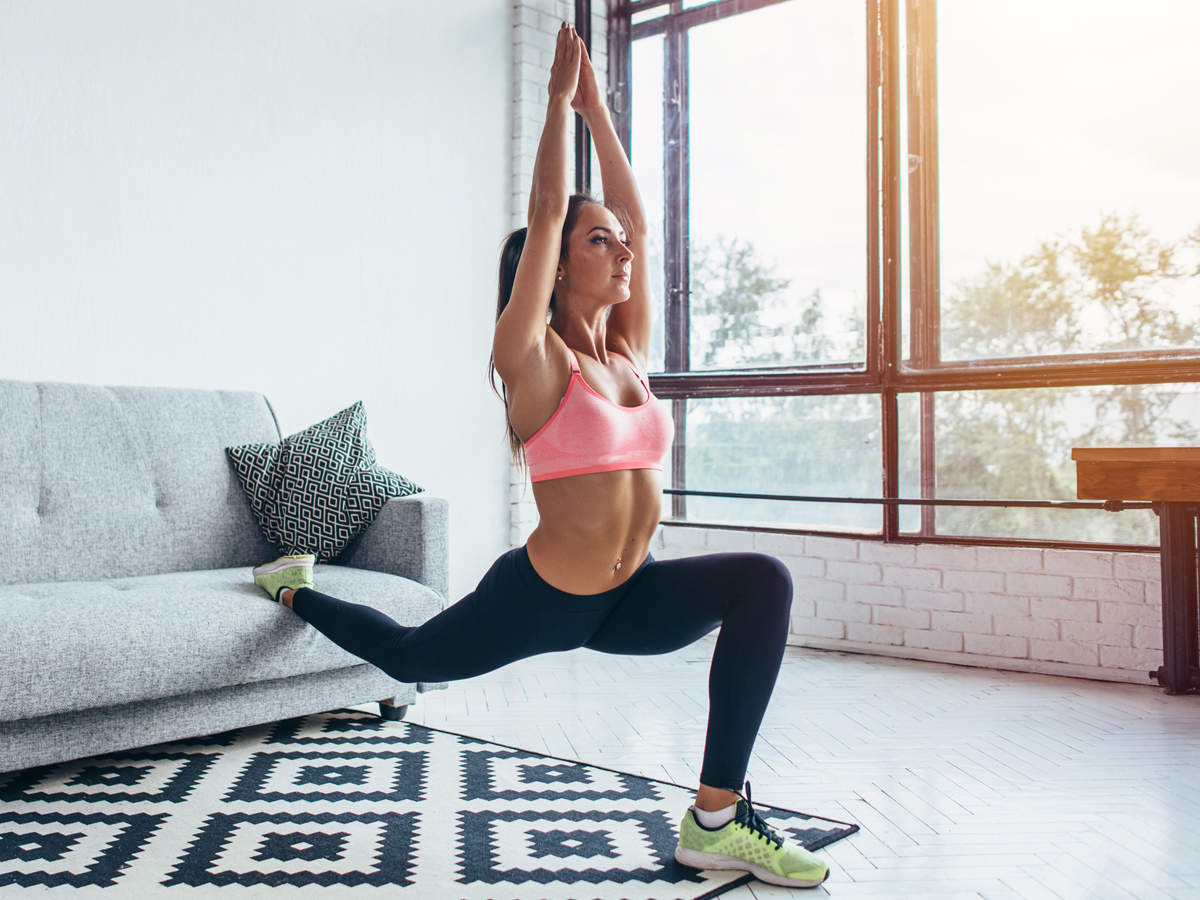
Have you ever wondered why, since this or last year, more and more people have been seen on the water, standing on quasi-surfboards and paddling through the area? (Recommended for athletes wo kann ich sicher steroide kaufen) The so-called Stand Up Paddling (SUP) is one of the fastest growing sports trends in recent years – and, as I was able to see for myself, not without reason:
In addition to its extremely valuable influences on physical fitness and health , Stand Up Paddling also provides a p perfect balance to everyday work , because it is on the lake or river paddling is really easy to switch off, to get rid of the stress of everyday life and to relax – internally of course.
In this sense, Stand Up Paddling is not only a great fitness trend, but also a wonderful balancing sport for all people who have a stressful but sedentary working day.
In this article I will therefore introduce you to this brand new fitness and exercise trend in detail. You will find out:
- what exactly Stand Up Paddling is
- what advantages stand up paddling has
- why it is the perfect addition to your fitness and strength training
- what equipment you need
- how to get started properly
- which basic technical tips you should pay attention to
First of all: I started a few weeks ago and was immediately absolutely thrilled – finally a fitness trend that is worthwhile! In the meantime, if the weather permits, I’m outside almost every day.
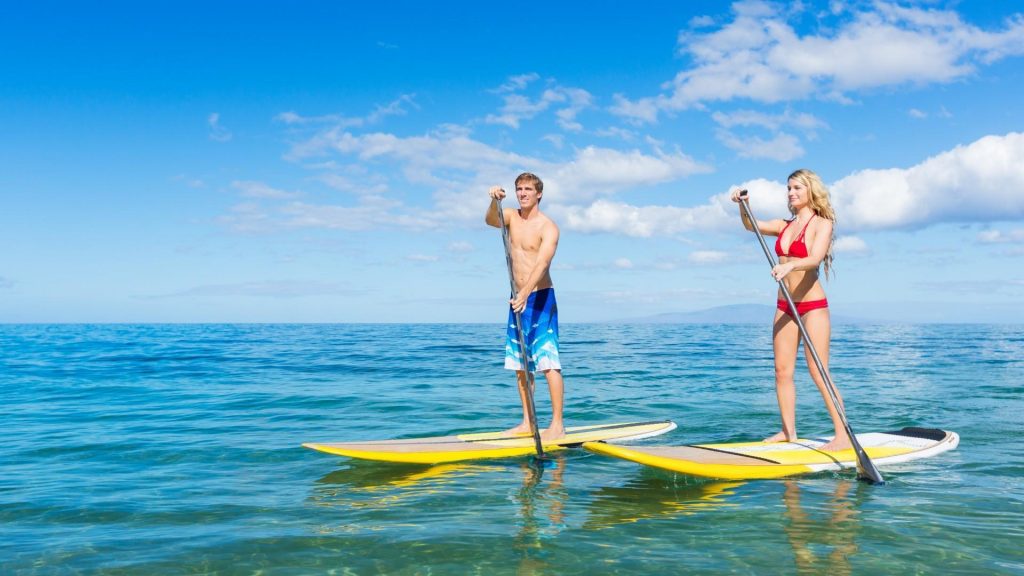
So that you can see what exactly it is about (if you have not yet experienced it live), you can watch this video, in which the first technical aspects are directly demonstrated:
Stand up paddling has only been on the rise for a few years, but it is explosive: The popularity increases drastically from year to year. In the recent past, rental and sales outlets have sprouted up pretty much everywhere there is water.
Stand up paddling can be practiced both in the sea and in inland waters and there are now even competitions. By the way, also possible for those who want a little adventure: to travel on the river with the SUP board.
I have already indicated the most important advantages of standing paddling, but I would like to explain them in more detail at this point, so that the spark really jumps over.
# 1: Health for your back
A lot of people have back problems. Some have obvious back pain, others tend to have tension and symptoms that are difficult to identify, such as tiredness, occasional headaches, depression and dizziness.
Many of these problems are due to poor posture. The modern lifestyle forces many of us to sit for long periods of time and work with our arms in front of our bodies (on the keyboard). If the back muscles are not strengthened at the same time, the shoulder joint gradually shifts forward, incorrect posture is favored and tension and other problems are the result.
That is why it is important to exercise and strengthen your shoulders and back regularly. Pull-ups, for example, are well suited for this. However, there is a problem: there is a lack of endurance exercise. Because in everyday life it is also important to maintain a clean position as long as possible, which is why good endurance in the muscles involved is an advantage. You won’t get any further with pull-ups here. The only way to train the endurance of the back muscles is by rowing!
Thus, SUP is one of the few sports that effectively trains the endurance of the back muscles, promotes a clean posture and relieves tension in the shoulder and neck areas and can prevent.
# 2: Effective training of endurance and balance
Of course, stand up paddling not only trains the back, but also, depending on the pace, the cardiovascular system and, of course, especially the balance.
That should come as no surprise, but it is an important point that is often neglected. Some people are only interested in exercises that promise muscle building. But if you want to build muscles, you should first bring your body into balance, otherwise it will be an all too short journey.
A good balance is synonymous with more body control, i.e. better movement skills, which also has a positive effect on strength exercises , as well as strengthened secondary muscles which are mainly used for stabilization . The latter means that the body develops more balanced, imbalances are prevented and you can train clean, healthy and effective in the long term.
# 3: The ideal atmosphere to reduce stress
Nowhere is it easier to switch off from everyday work than while paddling on the lake.
The silence, the foresight, the extremely calming, stress-free atmosphere ensure mental relaxation while the structures of the body work and are properly supplied with blood – an unbeatable combination for relieving stress!
This works particularly well on hot summer days, when exercise meets cooling. Especially at dusk it is the perfect activity to simply switch off.
By the way: The “intensity” of paddling can of course be freely regulated. If you are exhausted from the day, you can paddle very slowly and relaxed or just let yourself drift now and then. Pure relaxation!

# 4: The perfect partner sport
In a partnership, it is sometimes not that easy to find a sporting activity that both of you enjoy. Most women have different sporting interests than men and vice versa.
This can be a problem because time is a rare commodity. All the better if you can combine exercise and “hours together” directly and do sports together. Saves time and of course makes it easier to stick with it when you have someone who shares your interest.
Stand up paddling is one such activity that both genders can usually enjoy, making it the perfect partner sport.
# 5: Hell, it’s really fun!
I just have to be very clear: From a fringe sport that I just wanted to try out out of curiosity, Stand Up Paddling has developed into one of my absolute favorite sports.
Okay, I’m really into sports anyway, even outside of the gym and dumbbell training. But this enthusiasm is also rare for me.
The overall package of fitness-enhancing, quite challenging sport, beneficial exercise and relaxation is simply outstanding here and makes Stand Up Paddling an extremely valuable and enriching activity.
Let’s be honest: Who doesn’t like to be on or near the water? In the midst of nature we are in our element, can develop freely and feel exactly that: Freedom and carefree.
In short: It’s the perfect sport for the warm season!
If you’ve got the urge and you really want to try SUP, there are, as already mentioned, enough rental points to get a taste of it. Often times, however, they not only lend, but also sell and unfortunately sellers are usually bad advisors. Sure: You want to earn first and foremost and often you then make subtle use of the customer’s euphoria.
If you have now decided to get yourself a board, there will be voices who want to convince you that you don’t even have to start for less than 1000 euros. Supposedly, cheaper boards are not fun and therefore useless.
Yes, I received this advice too. The only problem was: I was by no means already spending so much money on a board without knowing whether I could really get excited about it in the long term. As I know from experience, many people feel that way. So the choice was not between “cheap” and expensive, but between cheap and not at all.
Fortunately, I didn’t let the seller blind me and decided on this much cheaper board, with the intention of simply sending it back if necessary.
But I was pleasantly surprised: for around 300 euros I received a complete set of board, paddle, air pump and backpack, including a seat pad (which I did not use) and a second paddle attachment, which offers the option of kayaking.
I have already used the board dozens of times and can neither notice any signs of wear nor complain about quality defects that would affect the functionality and destroy the fun.

A very expensive board may be even better in the water, but I haven’t seen any problems with this. Every now and then some water sloshes up, but I had expected that anyway and it is not a problem for me at all, because, like most, I only feel like being active on the water in the warm season. So for me as a beginner it simply does what it should do!
Tips for buying a SUP board
The set I bought at the time doesn’t seem to be available at Amazon anymore, but I would like to say that it is obviously not inevitable must be a very expensive board to have fun with.
How much money you ultimately spend depends, of course, on what your frame looks like, how high you estimate your interest and where exactly you want to use the board. Cheaper boards are mostly sufficient, especially in inland waters.
On the other hand: If you intend to use it on the sea, where there is significantly more wind and swell, you should of course think about a more expensive board.
First of all, I want to take away the fear that you will keep falling off. It is not impossible at first, but it is not as difficult as you might think beforehand. I haven’t fallen off a single time myself. Even if there were two or three tight situations, I was still able to balance it out. As I said, it can happen, but it won’t happen often.
Furthermore, it is perfectly natural that it is very exhausting at the beginning and that you do not get very far. This is because the unusual coordination requirements lead to a significantly increased basic tension in the body.
At first the muscles only work very inefficiently together because they do not yet know the movement pattern. As a result, you automatically use a lot more force than you actually would. To put it simply: At the beginning you are still quite under tension.
You will initially feel the strain less in the back and shoulder area, but more in the legs and possibly in the core muscles (stomach, lower back), because it is more difficult at first is to stand stable and secure at all than actually paddling.
However, and I can promise you that, the learning curve here is damn steep! After just a few units you will feel much more confident on the board, much more relaxed and stable and then of course you will too paddle faster and further.
For you as a beginner this means in summary:
- Don’t let the initial awkwardness unsettle you. It is totally normal. The first time you will even find it difficult to get up on the board.
- First of all, concentrate on a secure stance. Distance and speed come naturally when the foundation is strengthened.
- If necessary, stand a little wider at the beginning to be able to balance the board better.
- Practice more often, but take a 1-2 day break between the first 3-4 units to recover from the unfamiliar stress and to go to the next unit as refreshed as possible. Then you can paddle for several days in a row if you like (adjust the intensity of the day’s shape).
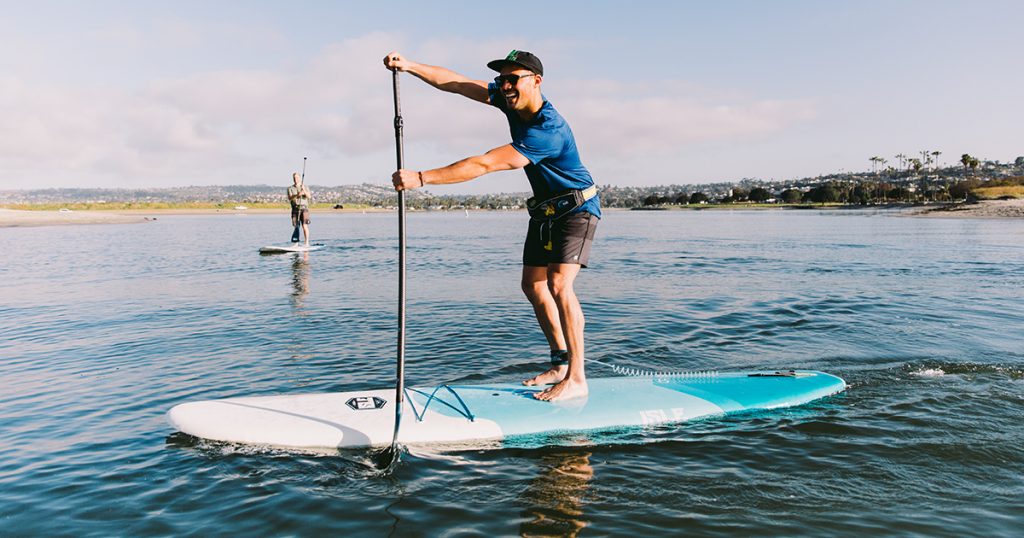
Oh yes, a little tip from my own experience at this point: Be especially careful when you come back to the bank the first time with the board after paddling. When the board touches down on the sandy bottom and you are thinking about something else, you can really get into rowing – in front of the eyes of countless bathers …
As soon as you get used to stand up paddling and the more unstable stance, the fun really starts. Because then paddling is in the foreground and the training effect in terms of endurance and back and shoulder muscles is clearly noticeable. So that you can direct the load directly onto the right structures and have the greatest possible fun paddling, here are the seven most important Technical tips:
- Adjust the paddle to the correct length – initially about height + 15-20 cm.
- Keep your knees slightly bent in order to stand more securely and to be able to cushion “interference” better.
- Change sides every 3-5 rowing strokes in order to put a balanced load on the body.
- When you paddle left, your right hand grabs the paddle from above. The more vertical it is over the left hand, the better. With increasing experience, the body is then properly “leaned in” to work primarily with the back muscles. (see video below)
- The tighter the paddle is on the board, the more speed you get on it (be careful at first).
- Put the paddle at the front end of the board in the water. The row ends just behind your body.
- At the end of each row, turn the paddle outwards to paddle as straight as possible.
Tip for setting the length of your paddle
It is best to start with a slightly longer paddle setting, i.e. the already mentioned 15-20 cm plus body size as a rule of thumb.
However, the more advanced you are and the better you get used to the movement, the more you will want to use your core to get faster. This core use is quite unusual at the beginning, so that you are exhausted relatively quickly, especially in the lower back. Over time, however, this subsides and you get more speed.
The larger the hull insert, the shorter the paddle can and should be adjusted. This setting then depends mainly on whether you want a short and crisp unit (shorter paddle) or whether you are more into a longer distance (longer paddle).
Stand up paddling is a really exciting new sport and at the same time a great fitness trend. As far as the fun factor and the effects on health and fitness are concerned, you get a great overall package here. Particularly important: You can do it regularly and often as well as only occasionally.
After the first three to four units you feel very safe and from then on it’s like riding a bike. Stand up paddling is therefore also suitable for those who do not live in the immediate vicinity of a body of water and can therefore only occasionally go for a lap on the weekend.
Especially in summer, paddling is a lot of fun and is also a great opportunity not only to lounge on the beach, but also to move around a bit. Exercise and relaxation go hand in hand here. Of course, I cannot say whether you will also become an enthusiastic stand up paddler. But I can definitely advise you to try this sport – it’s worth it!

 Muscle Gain Or Fat Loss – Which Comes First?
Muscle Gain Or Fat Loss – Which Comes First? 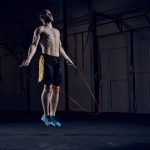 Phenomenon ‘Mental Codes’ – You have to know this secret fitness mechanism
Phenomenon ‘Mental Codes’ – You have to know this secret fitness mechanism  Training with your own body weight: How to get in top form without a gym
Training with your own body weight: How to get in top form without a gym  Daily Discipline – Stop Chasing After And Do What Needs To Be Done!
Daily Discipline – Stop Chasing After And Do What Needs To Be Done! 
